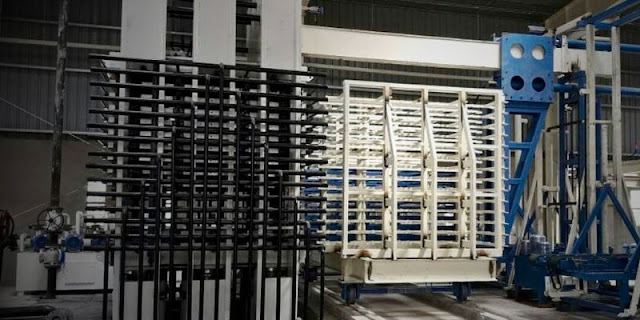The manufacturing of high-densified film face panels is a critical process in various industries, including construction, furniture, and interior design. These panels are known for their durability, high resistance to moisture, and superior surface finish, making them a popular choice for applications like concrete formwork, cabinetry, and flooring.
Hydraulic Hot Press Film face Comprage High Densified is a machine that has undergone significant innovations in recent years to enhance efficiency, precision, and sustainability.
This blog will explore the latest innovations in hydraulic hot press technology for high-densified film face panels, examining how these advancements are transforming the manufacturing landscape.
Understanding High-Densified Film Face Panels
High-densified film face panels are engineered wood products made by compressing wood fibers or particles under high pressure and temperature, often coated with a phenolic or melamine film to enhance their resistance to water, wear, and chemicals. These panels are typically used in environments where strength, durability, and a smooth surface finish are required, such as in concrete shuttering or high-wear furniture components.
The quality and performance of these panels depend largely on the precision and control offered during the pressing process, making hydraulic hot presses indispensable in their production.
The Role of Hydraulic Hot Presses in Panel Production
Hydraulic hot presses use hydraulic systems to exert controlled pressure and heat on materials, bonding them together into a dense, durable product. In the production of high-densified film face panels, these presses ensure that the wood fibers are compressed uniformly, while the high temperature activates the adhesives and bonds the film to the panel's surface. The result is a strong, high-performance panel with a flawless finish.
Key Innovations in Hydraulic Hot Press Technology
Advancements in hydraulic hot press technology have focused on improving the efficiency, precision, and environmental impact of panel production. Below are some of the key innovations that are redefining the industry:
1. Advanced Temperature and Pressure Control Systems
One of the most significant advancements in hydraulic hot press technology is the development of more precise temperature and pressure control systems. Modern hydraulic presses are equipped with digital controllers and sensors that monitor and adjust the pressure and temperature in real time. This level of control ensures consistent quality across all panels, reduces defects, and minimizes material waste.
By maintaining a consistent temperature throughout the pressing process, manufacturers can prevent issues like uneven curing or weak bonding, leading to stronger, more reliable panels.
2. Multi-Layer Pressing Technology
Another major innovation is multi-layer pressing technology. This approach allows multiple layers of film face panels to be pressed simultaneously, significantly increasing production efficiency. With multi-layer presses, manufacturers can produce large quantities of panels in a single cycle, reducing energy consumption and operational costs.
Multi-layer pressing also ensures that each layer receives uniform pressure and heat, resulting in consistent quality throughout the batch. This innovation is particularly beneficial for large-scale manufacturers looking to scale their production without compromising on quality.
3. Automated Loading and Unloading Systems
Automation is becoming a game-changer in hydraulic hot press technology. Automated loading and unloading systems are now integrated into many hydraulic press machines, reducing manual labor and increasing throughput. These systems use robotic arms or conveyor belts to feed raw materials into the press and remove finished panels, streamlining the production process and minimizing the risk of human error.
This automation not only enhances productivity but also improves workplace safety by reducing the need for operators to interact directly with the press during operation.
4. Energy-Efficient Design and Heat Recovery Systems
Modern hydraulic hot presses are designed with energy efficiency in mind. Innovations such as heat recovery systems capture and reuse the heat generated during the pressing process, reducing the overall energy consumption of the machine. Additionally, variable frequency drives (VFDs) are being used to optimize motor performance, further decreasing energy use.
These energy-efficient designs are not only cost-effective but also align with sustainability goals, reducing the carbon footprint of panel production.
5. Quick-Change Platen Systems
The development of quick-change platen systems allows for faster and easier maintenance and reconfiguration of the press. These systems enable operators to switch platens quickly without dismantling the entire press, reducing downtime and increasing overall productivity. This innovation is particularly useful for manufacturers who need to produce different types of panels or work with various materials.
6. Real-Time Monitoring and Data Analytics
The integration of IoT (Internet of Things) and Industry 4.0 technologies in hydraulic hot presses has enabled real-time monitoring and data analytics. Sensors embedded in the presses collect data on temperature, pressure, energy consumption, and cycle times. This data is then analyzed to identify patterns, optimize performance, and predict maintenance needs.
By leveraging these insights, manufacturers can reduce downtime, improve product quality, and make data-driven decisions to enhance overall efficiency.
7. Modular Design for Scalability
These presses can be customized and expanded based on production needs, allowing companies to start with a basic setup and add more modules as demand increases. This modular approach is cost-effective and allows for gradual investment in new technology, making it accessible for both small and large manufacturers.
8. Enhanced Safety Features
Safety is a priority in modern manufacturing, and hydraulic hot presses have evolved to include advanced safety features. These features may include automatic shut-off systems, emergency stop buttons, and safety interlocks that prevent the press from operating if a hazard is detected. Enhanced safety not only protects operators but also ensures compliance with industry standards and regulations.
Conclusion
Innovations in hydraulic hot press technology are revolutionizing the production of high-densified film face panels, offering manufacturers increased efficiency, precision, and sustainability. From advanced control systems and multi-layer pressing to automated handling and energy-efficient designs, these innovations are setting new standards in the industry.
As manufacturers continue to adopt these cutting-edge technologies, the future of panel production will be marked by even greater advancements, ensuring high-quality products and a more sustainable manufacturing process.









0 Comments